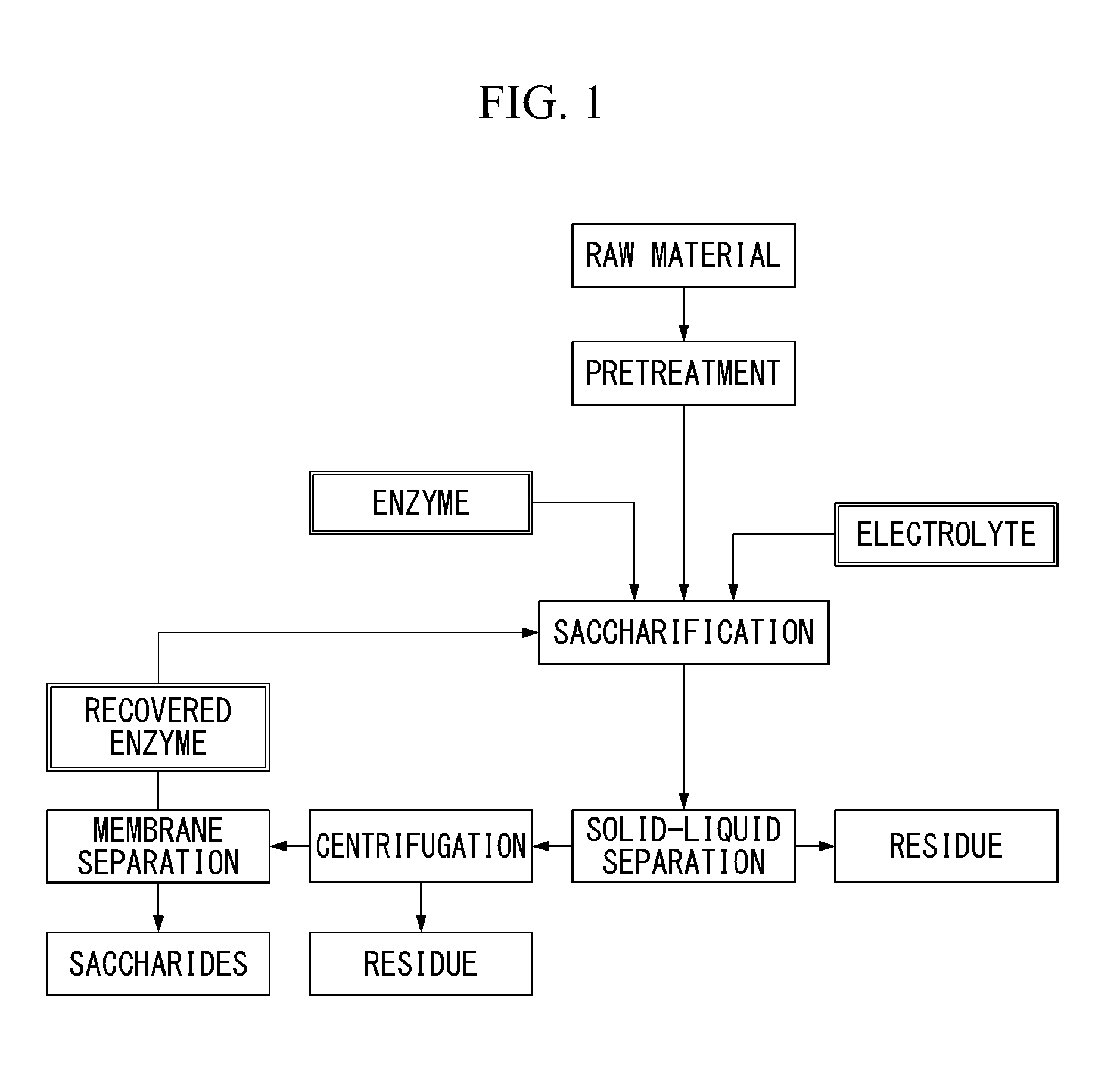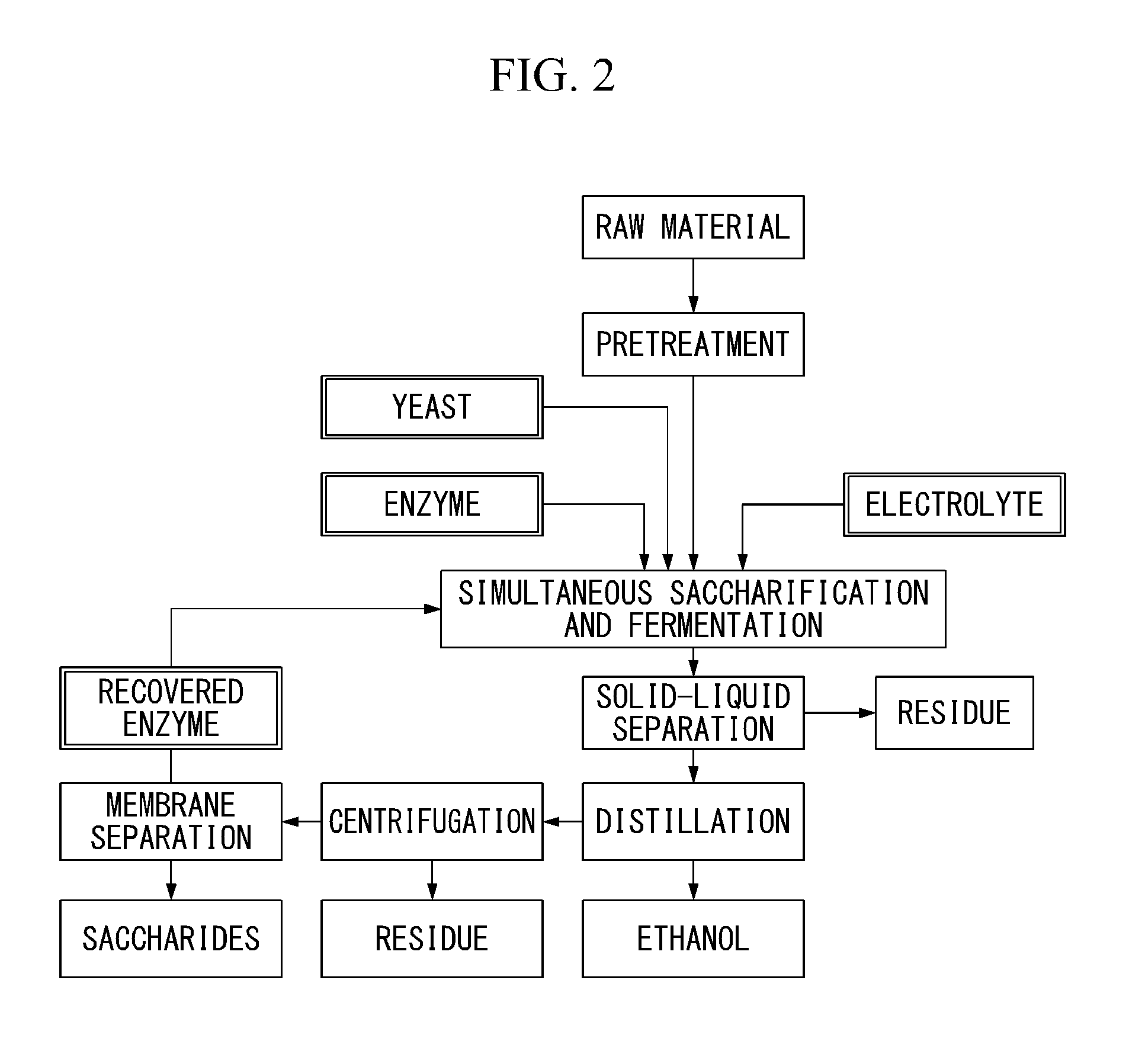Method for enzymatic saccharification treatment of lignocellulose-containing biomass, and method for producing ethanol from lignocellulose-containing biomass
a technology of lignocellulose and enzymatic saccharification, which is applied in the direction of biofuels, fermentation, solid waste disposal, etc., can solve the problems of increasing increasing the cost of post-treatment total cost, and low yield of saccharides, etc., to suppress the adsorption of saccharification enzymes, and reduce the cost of acid saccharification methods.
- Summary
- Abstract
- Description
- Claims
- Application Information
AI Technical Summary
Benefits of technology
Problems solved by technology
Method used
Image
Examples
examples
[0121]Hereinafter, the present invention will be described based on Examples, but the present invention is not intended to be limited by these Examples. In the respective Examples and Comparative Examples, the unit “%” indicates “mass %”, and the unit “parts” indicates “parts by mass.”
example a1
[0122]100 g of crushed forest residues were introduced into 1000 ml of water containing 20 g of 48% caustic soda, and the forest residues were treated at 90° C. for 30 minutes. Subsequently, the mixture was ground with a refiner (clearance 0.5 mm). This product was dehydrated and washed with a screw press, and the resulting product was used as the substrate raw material.
[0123]The substrate raw material was added at a final concentration of 5%, CSL (corn steep liquor) was added at a final concentration of 1%, ammonium sulfate was added at a final concentration of 0.5%, and sodium chloride was added at a final concentration of 100 mM. Thus, 400 ml of a lignocellulose suspension having an electrical conductivity of 11.8 mS / cm was prepared.
[0124]The lignocellulose suspension prepared as described above was steam sterilized at 120° C. for 20 minutes and was cooled to 40° C. Subsequently, 10 ml of an enzyme (trade name: GC220; manufactured by Genencor International, Inc.) was added theret...
example a2
[0128]The experiment was carried out in the same manner as in Example A1, except that instead of the sodium chloride added to a final concentration of 100 mM in the method of Example A1, sodium hydrogen carbonate was added to a final concentration of 100 mM. The electrical conductivity in the reaction system at this time was 8.6 mS / cm.
PUM
 Login to View More
Login to View More Abstract
Description
Claims
Application Information
 Login to View More
Login to View More - R&D
- Intellectual Property
- Life Sciences
- Materials
- Tech Scout
- Unparalleled Data Quality
- Higher Quality Content
- 60% Fewer Hallucinations
Browse by: Latest US Patents, China's latest patents, Technical Efficacy Thesaurus, Application Domain, Technology Topic, Popular Technical Reports.
© 2025 PatSnap. All rights reserved.Legal|Privacy policy|Modern Slavery Act Transparency Statement|Sitemap|About US| Contact US: help@patsnap.com



